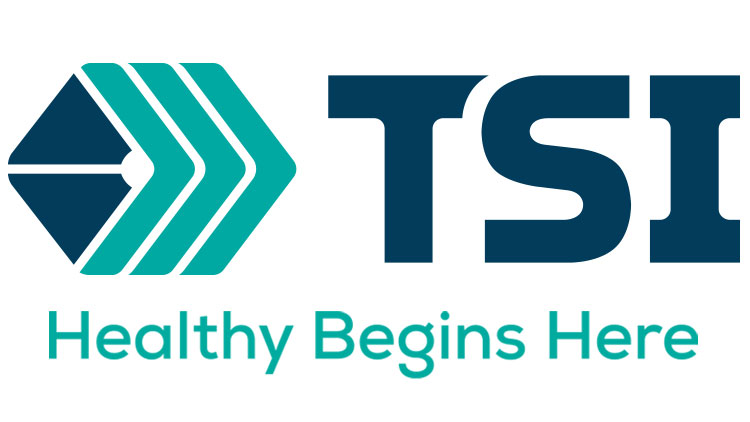Promotional Features
Does Your Supplier Partner Walk the Talk?
In a society that loves to use buzzwords, industry terms can become so overused, they lose their meaning. But there are key words and phrases (“transparency,” “sustainability” and “quality”) that are more than their meanings – they are the pillars of trust that drive the engine of product development and consumer loyalty.
There are many suppliers that provide quality ingredients but may lack in attractive sustainability practices, or suppliers that have compelling sustainability stories but are lacking in scientifically supported and technically enhanced ingredients. There are some that can provide full traceability almost instantly. But how about a supplier that leads in ensuring its products are fully traceable, has strong sustainability practices and also provides technically enhanced raw materials – all resulting in desirable cost savings, expediency in speed-to-market, and higher profits from increased sales?
In the supply side, it’s no longer enough to just provide branded ingredients. While the term “brand” has cache and imparts the concept of something special or extra, it does not necessarily encompass consistency or transparency, just as “natural” does not always automatically mean sustainable. Words and the values and characteristics they convey matter to consumers who rely on CPG companies to have their backs when it comes to safety and efficacy: the product contains precisely what it claims and is safe to use.
According to a 2019 consumer survey, consumers are not gullible and will do their research: they want access to reliable knowledge they can trust to choose products and brands that align with their values. Glucosamine, one of the world’s most popular and well-known supplements, is a keen example:
- 49% of people who regularly use glucosamine are influenced by sustainability concerns1
- 83% of Millennials say it’s important to buy from companies whose values align with theirs 2
- 40% of people who take glucosamine regularly don't know how it is sourced and/or processed 1
Transparency
Interestingly how the first two letter of “transparency” are also the same as in “trust,” which transparency is meant to elicit from consumers. But it is a rather nebulous term as far as presentation of proof. From the sea or ground to the consumer’s medicine cabinet is a road with many way stops.
Here is the conundrum: studies show that consumers expect transparency in knowing where the ingredients that make up the supplements they take come from, but the same studies show a gap between this desire and their actual understanding of what this process entails. Many ingredients are treated as commodities and the supply chain is usually a web of traders, brokers, exporters, importers and distributors –each middleman adds complexity and opacity. Regulations require traceability in the form of documents, but these are not readily available to consumers, and in the end this trail is not easy for consumers to follow.
The concept of traceability is further compromised when supplement makers use branded ingredients to give the illusion that there is transparency. Unfortunately, many brands are just created for marketing purposes, and the actual ingredients are made by third parties who are often selected on price.
TSI Group has always made transparency a core principle. Their leading branded ingredient – GlucosaGreen® - is manufactured, imported, and distributed by TSI. There are no third-party manufacturers, traders or brokers. The product is made in the same factory to the same exacting standards lot after lot.
Further, TSI’s website glucosagreen.com is published specifically for consumers, giving them direct access to the actual ingredient manufacturer. This is the only way to give them the assurance of consistent quality and the confidence that they are truly buying a product that is aligned with their values.
Sustainability
“Sustainability” is a powerful word, calling to mind “replenishment,” “renewability” and “strength.” And as more people worldwide use more supplements, the concern of continued availability of core raw materials is valid.
When it comes to sustainability, there is clearly a desire on the part of consumers to buy products that come from companies that share their values. This will show up in the bottom line. For example, more than 60% of people worldwide who regularly use glucosamine are willing to pay a price premium for an environmentally friendly and sustainably sourced product.4
GlucosaGreen® is sustainable as it is not dependent on a fragmented supply of crustacean shells, the conventional source for glucosamine. Shellfish are also used as a starting material for other products, which further stresses and reduces the supply. Made from non-GMO corn, GlucosaGreen® produces only 2 percent of waste compared to shellfish glucosamine. GlucosaGreen® uses glucose as a starting material, which undergoes an efficient patented fermentation process. Glucose is widely available and is easily sourced (via non-GMO corn), even in difficult times. Fermentation is a simple process that has a minimal environmental impact.
This is also great news for pet supplement brands, as glucosamine is sought out by pet parents to help protect joint health in dogs -- 84% of dog owners would pay more for pet supplements that have ingredients that are made through a “green” process. 3
Quality
When it comes to how the raw materials come together to make a finished product, consistency is the key. Whether that is in tablet size, quality, taste, color, dosage, or any other criteria, brands that meet customer expectations every time will thrive.
However, getting there is not so easy when supply chains are as complex as they are with supplement ingredients. Finished-dose producers often need to process raw materials once they are received from the manufacturer, since keeping a consistent source is often a challenge. This is especially true when making tablets or capsules. The properties of one source may differ from another, even when both meet a certain given spec. This creates the need for additional processing that adds costs in handling, adding additional raw materials, lower yields, and testing. Eliminating most, if not all of these costs simply adds to the bottom line.
For example, direct-compression (DC) granules enable production of smaller tablets with better hardness, uniformity and disintegration time, and without chipping and capping, as well as reduces excipients, improves tablet aesthetics, improves operational efficiency and reduces overall costs. The right (high compressibility) granule is the basis of a tablet that performs as the consumer expects and allows for a cleaner label.
TSI direct compressible-grade glucosamine can produce tablets with low friability even with no microcrystalline cellulose (typically used in direct compression) and about 1% magnesium stearate. For example, a manufacturer making a tablet that includes 20% glucosamine HCL, 8% chondroitin, 10% methylsulfonyl methane (MSM) and 6.6% green-lipped mussel was adding 24% MCC and was still unable to compress the tablet. When using TSI’s glucosamine HCl DC they were able to compress and in fact was able to reduce the amount of MCC in the formulation.
The next generation of wellness supplements isn’t in the future – it’s here now. Ensure your supplier is more than a supplier, but a partner in formulating and production of dietary supplements that fulfill consumers’ need for quality, traceability, safety, and sustainability.
----------
References:
1 Trust Transparency Center. (2019). 2019 2nd annual Trust Transparency Center Single Ingredient Trade Association Consumer Survey
2Consumer Culture [5W PR 2020 Report]
3 Survey conducted by TSI Group November 2020, pet owners in the US
4 Trust Transparency Center. (2020). ITC Insights: Consumer Survey Glucosamine Focus




